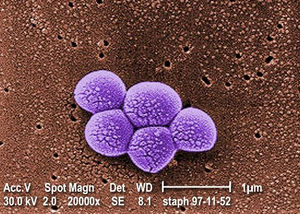Tea Tree Oil Treatment of MRSA
Introduction
Antibiotic resistance is a growing problem. As more pathogens become less susceptible to commonly used antibiotics, they become more difficult for medical practitioners to treat. The impotence of common antibiotics underscores the importance of determining alternative anti-microbial treatments. Studies indicate the effectiveness of tea tree oil as treatment for infections of drug-resistant bacteria, including methicillin-resistant Staphylococcus aureus, or MRSA. Tea tree oil is the essential oil derived from the Australian native plant Melaleuca alternifolia. Tea tree oil has been topically applied for centuries as a folk remedy for acne, lice, athlete's foot, and a number of other conditions. Clinical studies indicate that tea tree oil can also treat skin infection caused by MRSA. MRSA is a type of staph bacteria that is resistant to beta-lactam antibiotics, such as penicillin, amoxicillin, oxacillin, and methicillin. According to the Centers for Disease Control and Prevention (CDC), MRSA is a public health problem as it is commonly contracted in healthcare and community settings. Tea tree oil's bacteriocidal and bacteriostatic effects make this plant extract a plausible addition or supplement to a MRSA treatment plan.
MRSA is a Gram-positive coccus-shaped anaerobe that
Tea tree oil...
Composition and Benefits of Tea Tree Oil
....
Antimicrobial Mechanism of Action
Include some current research in each topic, with at least one figure showing data.
Side Effects
Include some current research in each topic, with at least one figure showing data.
Conclusion
Overall paper length should be 3,000 words, with at least 3 figures.
References
Edited by Karen Leung, a student of Nora Sullivan in BIOL187S (Microbial Life) in The Keck Science Department of the Claremont Colleges Spring 2013.

